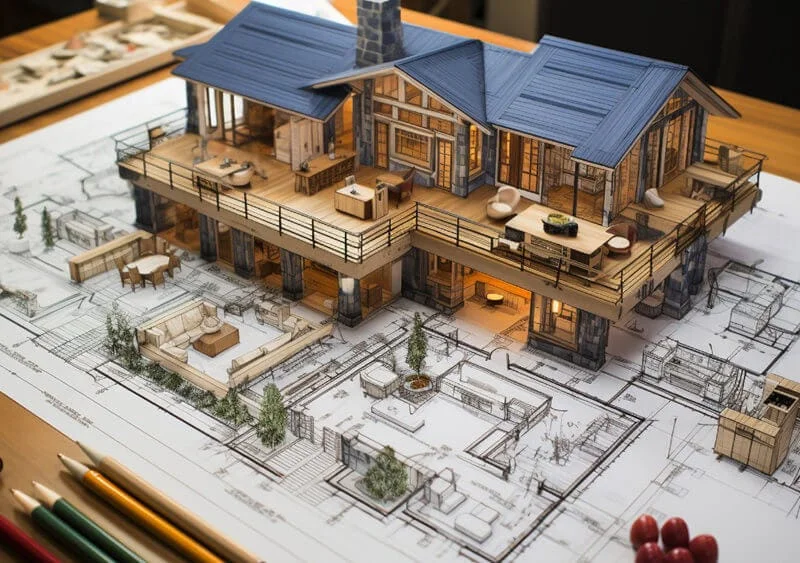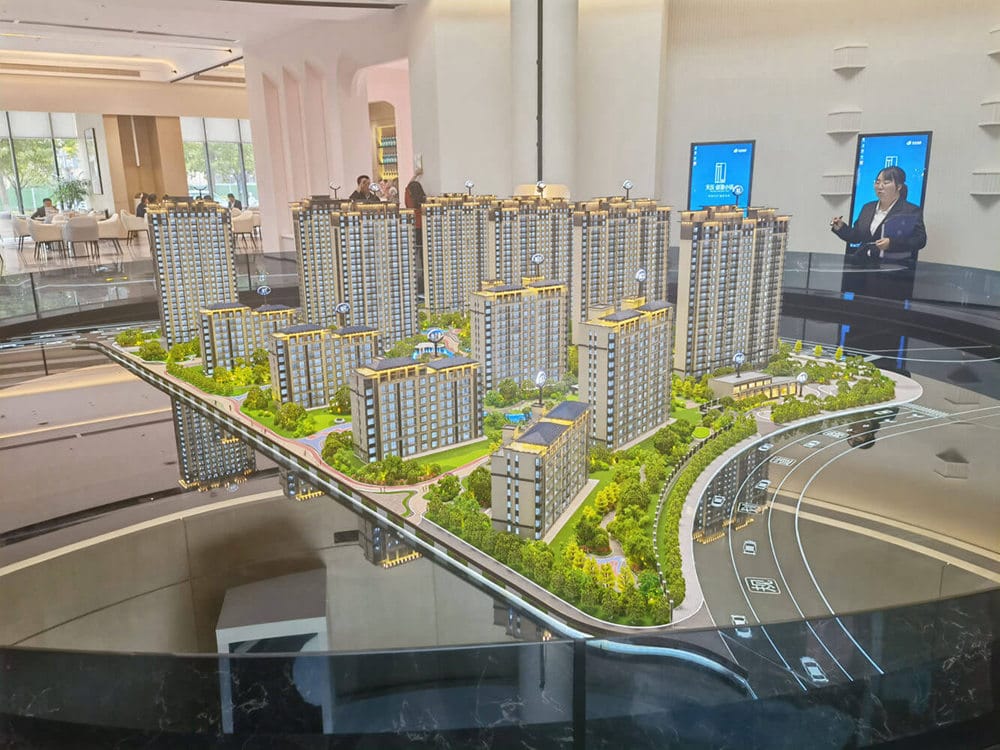Σε αρχιτεκτονική μακέτα, Η επιλογή του σωστού υλικού είναι κρίσιμη, Στρατηγική απόφαση που επηρεάζει κάθε πτυχή του τελικού προϊόντος. Ξεπερνά κατά πολύ την απλή αισθητική; είναι ζωτικής σημασίας για την επίτευξη του επιθυμητού αποτελέσματος σε κάθε στάδιο της διαδικασίας σχεδιασμού. Από εννοιολογικά μοντέλα χρησιμοποιώντας οικονομικά προσιτά υλικά όπως σανίδα αφρού και χαρτόνι να μοντέλα παρουσίασης απαιτούν πιο εκλεπτυσμένες επιλογές όπως ακρυλικό και ξύλο, η επιλογή υλικού επηρεάζει αντοχή, ακρίβεια, και αισθητική έλξη. Ολο και περισσότερο, φιλικά προς το περιβάλλον υλικά σαν ανακυκλωμένα πλαστικά και βιοδιασπώμενοι αφροί κερδίζουν έλξη για βιώσιμα σχέδια. Κατανόηση του τρόπου χειρισμού, τομή, και κολλήστε αυτά τα υλικά, μαζί με την αποφυγή κοινών λαθών, θα βοηθήσει να ανυψώσετε τα μοντέλα σας. Ο πειραματισμός και η ευελιξία με τα υλικά μπορούν να βελτιώσουν και τα δύο σχεδιαστική έκφραση και ποιότητα μοντέλου. Αυτός ο οδηγός θα παρέχει τις γνώσεις των ειδικών που χρειάζεστε για να κάνετε συνειδητές επιλογές για το επόμενο έργο σας.
Πίνακας περιεχομένων
Η σημασία της επιλογής υλικού στα αρχιτεκτονικά μοντέλα
Υλικά: Η θεμελίωση κάθε αρχιτεκτονικού μοντέλου
Όταν πρόκειται για αρχιτεκτονικά μοντέλα, Τα υλικά είναι πολύ περισσότερα από απλά «πράγματα» για την κατασκευή. Είναι οι αφανείς ήρωες της διαδικασίας σχεδιασμού, διαμορφώνοντας τον τρόπο με τον οποίο γίνεται αντιληπτή μια έννοια, κατανοητό, και έμπειροι. Το κατάλληλο υλικό μπορεί να μεταμορφώσει ένα απλό σκίτσο σε ένα απτό έργο τέχνης, αναδεικνύοντας την ψυχή ενός σχεδίου και βοηθώντας το να ξεφύγει από τη σελίδα (ή την οθόνη, ή τον πίνακα σύνταξης) και στον πραγματικό κόσμο. Χωρίς τα κατάλληλα υλικά, ακόμη και οι πιο λαμπρές αρχιτεκτονικές ιδέες μπορούν να καταρρεύσουν - ακριβώς όπως η προσπάθεια να χτίσετε ένα σπίτι σε ένα θεμέλιο από κινούμενη άμμο. Αυτό είναι ένα θεμελιώδες θέμα που εισάγουμε στη σελίδα του πυλώνα μας, Ο τελικός οδηγός για αρχιτεκτονικά μοντέλα υψηλού επιπέδου.
Γιατί έχει σημασία η επιλογή υλικού? Λοιπόν, φανταστείτε να προσπαθείτε να μεταφέρετε το κομψό, μοντέρνες γραμμές πολυώροφου με κάτι που μοιάζει και μοιάζει με χαρτόνι. Δεν είναι ακριβώς το μήνυμα στο οποίο στοχεύετε, δικαίωμα? Τα υλικά κάνουν περισσότερα από το να αντιπροσωπεύουν τα φυσικά χαρακτηριστικά ενός κτιρίου—βοηθούν στην έκφραση του κλίμακα, μορφή, υφή, και σχεδιαστική πρόθεση πίσω από τη δομή. Τα υλικά ζωντανεύουν το όραμά σας και βοηθούν τους άλλους να κατανοήσουν το όνειρο που προσπαθείτε να επικοινωνήσετε.
Τα σωστά υλικά μπορούν επίσης να καθορίσουν το διάθεση και συγκίνηση του μοντέλου σας. Είτε χρησιμοποιείτε το smooth, διαφανές φινίρισμα από ακρυλικό για να μεταφέρει τη νεωτερικότητα ή το γήινο, φυσική αίσθηση του ξύλου που προκαλεί ζεστασιά και βιωσιμότητα, κάθε επιλογή υλικού στέλνει ένα μήνυμα για το σχέδιο. Και πέρα από την αισθητική, Τα υλικά παίζουν επίσης κρίσιμο ρόλο στη λειτουργικότητα—βοηθώντας στον έλεγχο δομικών ιδεών, επιδεικνύουν αναλογίες, και βεβαιωθείτε ότι το τελικό προϊόν είναι εξίσου σταθερό με το όραμα πίσω από αυτό.
Σκοπός του άρθρου: Ο απόλυτος οδηγός σας για την επιλογή υλικού
Ετσι, γιατί είμαστε εδώ σήμερα και μιλάμε για υλικά αρχιτεκτονικού μοντέλου? Η απάντηση είναι απλή: η επιλογή του σωστού υλικού είναι σαν να επιλέγετε τη σωστή χρωματική παλέτα για έναν πίνακα. Όλα έχουν να κάνουν με τη μετάδοση του σωστού μηνύματος, με τον σωστό τρόπο, την κατάλληλη στιγμή. Είτε εργάζεστε σε ένα εννοιολογικό μοντέλο που δοκιμάζει νέες ιδέες ή α μοντέλο τελικής παρουσίασης που θα χρησιμοποιηθεί για να προσελκύσει πελάτες, τα υλικά που θα επιλέξετε θα επηρεάσουν άμεσα τον τρόπο με τον οποίο γίνεται αντιληπτό το σχέδιό σας.
Σε αυτό το άρθρο, θα σας βοηθήσουμε να σας καθοδηγήσουμε στον λαβύρινθο των υλικών που είναι διαθέσιμα για την κατασκευή αρχιτεκτονικών μοντέλων. Θα μάθετε ποια υλικά είναι τα καλύτερα κατάλληλα για διαφορετικά στάδια της διαδικασίας σχεδιασμού, από τα πρώιμα εννοιολογικά σκίτσα έως τα εκλεπτυσμένα, αναλυτικές παρουσιάσεις. Στην πορεία, θα διερευνήσουμε τα πλεονεκτήματα και τα μειονεκτήματα των διαφόρων υλικών — είτε στοχεύετε σε κάτι αποδοτικός, διαρκής, ή οπτικά εντυπωσιακό.
Μέχρι να τελειώσεις την ανάγνωση, θα έχετε μια σταθερή κατανόηση του τρόπου επιλογής του τέλεια υλικά με βάση τις συγκεκριμένες ανάγκες του έργου σας, είτε πρόκειται για εξερεύνηση σχεδιασμού, δέσμευση πελατών, ή τελική παρουσίαση. Έτοιμος να βουτήξει? Ας ξεκινήσουμε!
Βασικοί παράγοντες που πρέπει να ληφθούν υπόψη κατά την επιλογή υλικών για αρχιτεκτονικά μοντέλα
Το Στάδιο του Έργου: Από την έννοια στην πραγματικότητα
Η επιλογή του σωστού υλικού για το αρχιτεκτονικό σας μοντέλο είναι σαν να επιλέγετε το σωστό ντύσιμο για μια μεγάλη εκδήλωση—όλα εξαρτώνται από την περίσταση. Το στάδιο του έργου σας καθορίζει εάν χρειάζεστε κάτι γρήγορο και εννοιολογικό ή κάτι που μπορεί να επιβιώσει από τον έλεγχο κάτω από τα φώτα της δημοσιότητας.
Για ένα εννοιολογικό μοντέλο, δεν αναζητάτε απαραίτητα τέλεια φινιρίσματα — εξερευνάτε βασικά σχήματα, τόμος, και χωρικές σχέσεις. Σανίδες αφρού, χαρτόνι, και χαρτί είναι τα υλικά που προτιμάτε εδώ—ελαφριά, φτηνός, και εύκολο στη χειραγώγηση. Η ιδέα είναι να μεταδοθεί η έννοια, μην αγχώνεστε για τις λεπτές λεπτομέρειες.
Όταν όμως μετακομίσεις σε μοντέλα εργασίας, όπου ο σχεδιασμός είναι πιο εκλεπτυσμένος και πρέπει να δοκιμάσει τη λειτουργικότητα και την αναλογία, τα υλικά πρέπει να το ενισχύσουν. Νομίζω μπάσσο, ξύλο μπάλσα, και ακρυλικό. Αυτά τα υλικά είναι ιδανικά για πιο περίπλοκες λεπτομέρειες και σας δίνουν την ανθεκτικότητα που χρειάζεστε για δοκιμές χωρίς να θυσιάσετε πολύ χρόνο ή κόστος.
Τότε, υπάρχει το μοντέλο τελικής παρουσίασης. Εδώ θα παρουσιαστεί το σχέδιό σας σε όλο του το μεγαλείο—έτσι πρέπει να λάμπει. Αυτό είναι το πλεονέκτημα που θα σας βοηθήσει διπλασιάστε τις πωλήσεις σας. Υλικά όπως ακρυλικό, ρητίνη, ή μέταλλο είναι ιδανικά για αυτό το στάδιο. Χρειάζεσαι ακρίβεια, καθαρά φινιρίσματα, και ανθεκτικότητα στην αντοχή στο χειρισμό, παρέχοντας επίσης αυτόν τον παράγοντα "wow" όταν χτυπάει στην αίθουσα συνεδριάσεων ή στην οθόνη.
Περιορισμοί προϋπολογισμού: Χτίζοντας όνειρα σε έναν προϋπολογισμό
Αχ, το αιώνιο δίλημμα κάθε αρχιτέκτονα: προσπαθώντας να κάνετε το όραμά σας να ζωντανέψει χωρίς να σπάσετε τα χρήματα. Οι περιορισμοί του προϋπολογισμού είναι ένας μεγάλος παράγοντας κατά την επιλογή υλικών. Εάν εργάζεστε σε ένα εννοιολογικό μοντέλο, ο προϋπολογισμός μπορεί να είναι περιορισμένος - και αυτό είναι εντάξει! Υλικά όπως χαρτόνι, σανίδα αφρού, και χαρτί είναι προσιτές και ευέλικτες, ιδανικό για καταιγισμό ιδεών και γρήγορα σκίτσα. Αυτά τα υλικά κάνουν τη δουλειά τους χωρίς την βαριά τιμή.
Όταν μπεις σε περισσότερα λεπτομερή ή λειτουργικά μοντέλα, το κόστος μπορεί να αρχίσει να αυξάνεται, ειδικά όταν χρησιμοποιείτε υλικά υψηλής ποιότητας όπως ξύλο, ρητίνη, ή ακρυλικό. Αυτά τα υλικά επιτρέπουν πιο περίπλοκες λεπτομέρειες και ανθεκτικότητα. Το κόλπο εδώ είναι να ισορροπήσεις λειτουργικότητα με σχέση κόστους-αποτελεσματικότητας—χρησιμοποιήστε ακριβότερα υλικά εκεί που έχουν μεγαλύτερη σημασία και επιλέξτε επιλογές φιλικές προς τον προϋπολογισμό όπου δεν θα είναι ο πρωταγωνιστής της εκπομπής. Για μια βαθιά βουτιά σε αυτό το θέμα, ο οδηγός μας για ο 5 Βασικοί παράγοντες της τιμολόγησης αρχιτεκτονικών μοντέλων είναι απαραίτητο διάβασμα.
Για έργα μεγάλης κλίμακας ή μακροπρόθεσμα, ο προγραμματισμός είναι το κλειδί. Ανακυκλωμένα υλικά μπορεί να είναι φιλικό προς το περιβάλλον (και οικονομικά) επιλογή. Υλικά όπως ανακυκλωμένο ξύλο ή ανακυκλωμένα πλαστικά μπορεί να προσφέρει αντοχή και ανθεκτικότητα χωρίς να διογκώνει τον προϋπολογισμό σας. Μερικές φορές, δεν έχει να κάνει μόνο με τα υλικά που επιλέγεις, αλλά πόσο δημιουργικά μπορείτε να τα χρησιμοποιήσετε.
Απαιτήσεις χρόνου: Racing το ρολόι
Ο χρόνος είναι χρήμα—ειδικά στον κόσμο της κατασκευής αρχιτεκτονικών μοντέλων. Το πόσο γρήγορα πρέπει να δημιουργήσετε το μοντέλο σας θα επηρεάσει άμεσα τα υλικά που θα επιλέξετε. Εάν βρίσκεστε σε ένα κρίσιμη ώρα και χρειάζεται α εννοιολογικό μοντέλο γρήγορα, κολλήστε με υλικά που είναι εύκολο να χειριστούν και απαιτούν ελάχιστη προσπάθεια για τη συναρμολόγηση. Υλικά όπως χαρτόνι, σανίδα αφρού, ή χαρτί θα σας επιτρέψει να απορρίψετε τις πρόχειρες ιδέες χωρίς να κολλήσετε στις λεπτομέρειες. Η εστίαση είναι στην ταχύτητα, όχι τελειότητα.
Για περισσότερα λεπτομερή μοντέλα ή μοντέλα παρουσίασης, το χρονοδιάγραμμα είναι πιθανότατα μεγαλύτερο, και εκει ειναι ακρυλικό, ξύλο, ή ρητίνη μπαίνουν στο παιχνίδι. Αυτά τα υλικά απαιτούν περισσότερο χρόνο για εργασία, ειδικά για τρίψιμο, τομή, και φινίρισμα, αλλά το αποτέλεσμα είναι ένα μοντέλο που αντέχει στον έλεγχο. Στην προκειμένη περίπτωση, ο χρόνος που ξοδεύετε αξίζει την πρόσθετη αντοχή και οπτικό αντίκτυπο. Τεχνολογίες όπως κοπή με λέιζερ και 3D Εκτύπωση μπορεί να βοηθήσει στην επιτάχυνση των διαδικασιών, ειδικά όταν πρόκειται για κοψίματα ακριβείας ή περίπλοκες λεπτομέρειες.
Σχεδιαστική Πρόθεση: Ποια είναι η Μεγάλη Ιδέα?
Ποια είναι η ιστορία του σχεδίου σας? Είναι ένας φουτουριστικός ουρανοξύστης με κομψές γυάλινες προσόψεις, ή ένα ρουστίκ εξοχικό σπίτι με ανάγλυφα ξύλινα δοκάρια? Τα υλικά που θα επιλέξετε πρέπει να αντικατοπτρίζουν το δικό σας σχεδιαστική πρόθεση και κοινοποιήστε αυτή την ουσία ξεκάθαρα. Εάν σχεδιάζετε ένα μοντέλο με έμφαση σε σύγχρονη αισθητική, υλικά όπως ακρυλικό ή ποτήρι θα σας βοηθήσει να μεταφέρετε το κομψό, γυαλισμένα φινιρίσματα, και διαφάνεια. Για σχέδια που στοχεύουν ζεστασιά και γήινο, υλικά όπως ξύλο, φελλός, ή μπαμπού μπορεί να προσθέσει μια φυσική αίσθηση που αντικατοπτρίζει τη συνολική ατμόσφαιρα που θέλετε.
Μην ξεχνάτε το κλίμακα και ποσοστό του μοντέλου. Υλικά όπως σανίδα αφρού μπορεί να βοηθήσει στην γρήγορη απεικόνιση του όγκου και του όγκου, ενώ πιο εκλεπτυσμένα υλικά όπως μπάσσο ή μέταλλο είναι ιδανικά για την ανάδειξη αρχιτεκτονικών λεπτομερειών. Όπως συζητάμε στον οδηγό μας για Βρίσκοντας την τέλεια ισορροπία κλίμακας και λεπτομέρειας, η υφή και το πάχος του υλικού πρέπει να είναι κατάλληλα για την επιλεγμένη κλίμακα. Τα υλικά που θα επιλέξετε θα σας βοηθήσουν να κάνετε την ιστορία του σχεδίου πιο ξεκάθαρη και πιο εντυπωσιακή, επιτρέποντας στο μοντέλο να επικοινωνήσει τις ιδέες σας ακόμη και πριν κάποιος διαβάσει τη σύντομη.
Ανθεκτικότητα και σταθερότητα: Η δοκιμασία του χρόνου
Έχετε καταβάλει όλη αυτή την προσπάθεια για να δημιουργήσετε ένα μοντέλο - τώρα, θέλεις να κρατήσει. Η ανθεκτικότητα είναι απαραίτητη, ειδικά όταν πρόκειται να μεταφερθούν μοντέλα, εκτεθειμένος, ή το χειρίζονται πολλά άτομα. Ορισμένα υλικά είναι πιο ανθεκτικά από άλλα. Εάν το μοντέλο σας πρέπει να υπομένει συνεχή χειρισμό, φροντίστε να χρησιμοποιείτε ανθεκτικά υλικά που αντέχουν στη φθορά.
Ακρυλικό, ξύλο, και μέταλλο προσφέρουν εξαιρετική αντοχή και θα αντέξουν καλά με την πάροδο του χρόνου. Ρητίνη και σανίδα αφρού, από την άλλη, είναι καλύτερα για βραχυπρόθεσμη χρήση ή μοντέλα που θα παραμείνουν ακίνητα. Εάν το μοντέλο σας εμφανίζεται σε εξωτερικό χώρο ή σε περιοχή με κυμαινόμενες θερμοκρασίες, θα θέλετε να επιλέξετε υλικά που δεν είναι επιρρεπή σε στρέβλωση ή ζημιά. Η ανθεκτικότητα είναι ιδιαίτερα κρίσιμη εάν το μοντέλο σας πρέπει να αποσταλεί, μια διαδικασία που καλύπτουμε στο δικό μας Οδηγός για τη συσκευασία και τη μεταφορά μοντέλων.
Είναι επίσης σημαντικό να ληφθεί υπόψη περιβαλλοντικούς παράγοντες. Η έκθεση στο ηλιακό φως μπορεί να εξασθενίσει ορισμένα υλικά με την πάροδο του χρόνου, έτσι εάν το μοντέλο σας πρόκειται να εκτεθεί σε φωτεινό δωμάτιο ή κάτω από άμεσο φως, θα θέλετε να επιλέξετε υλικά όπως ακρυλικό ή μέταλλο που δεν υποβαθμίζεται ή αποχρωματίζεται. Η ανθεκτικότητα του μοντέλου σας επηρεάζει το πόσο καλά μπορεί να αντέξει τις πιέσεις της χρήσης για την οποία προορίζεται — επομένως επιλέξτε με σύνεση.
| Παράγοντας | Τι να λάβετε υπόψη | Τα καλύτερα υλικά για την εργασία |
|---|---|---|
| Στάδιο Έργου | Σχετικός με την σύλληψη ή αντίληψη, εργαζόμενος, ή τα μοντέλα παρουσίασης απαιτούν διαφορετικά επίπεδα λεπτομέρειας. | Σχετικός με την σύλληψη ή αντίληψη: Αφρώδες σκάφος, χαρτόνι, χαρτί; Εργαζόμενος: Ξύλο, ρητίνη; Παρουσίαση: Ακρυλικό, μέταλλο |
| Περιορισμοί προϋπολογισμού | Μείνετε εντός προϋπολογισμού, επιτυγχάνοντας την επιθυμητή ποιότητα και λεπτομέρεια. | Προμηθευτός: Χαρτόνι, αφρός; Μεσαίας κατηγορίας: Ξύλο, ακρυλικό; High-end: Μέταλλο, ρητίνη |
| Απαιτήσεις χρόνου | Η ταχύτητα παραγωγής επηρεάζει την επιλογή υλικού - τα πιο γρήγορα μοντέλα χρησιμοποιούν ελαφρύτερο, πιο απλά υλικά. | Γρήγορα μοντέλα: Χαρτόνι, αφρός; Λεπτομερή μοντέλα: Ακρυλικό, ξύλο, ρητίνη |
| Σχεδιαστική Πρόθεση | Επιλέξτε υλικά που αντικατοπτρίζουν τις αισθητικές και συναισθηματικές ιδιότητες του σχεδίου. | Σύγχρονος: Ακρυλικό, ποτήρι; Φυσικός: Ξύλο, φελλός, μπαμπού |
| Αντοχή & Σταθερότητα | Βεβαιωθείτε ότι τα υλικά αντέχουν στο χειρισμό και στους περιβαλλοντικούς παράγοντες όπως το φως και η θερμοκρασία. | Διαρκής: Ακρυλικό, ξύλο, μέταλλο; Βραχυπρόθεσμα: Ρητίνη, αφρός |
Η επιλογή των σωστών υλικών για το αρχιτεκτονικό σας μοντέλο είναι σαν να βρίσκετε τα τέλεια κομμάτια παζλ—όλα πρέπει να ταιριάζουν σωστά. Λαμβάνοντας υπόψη το στάδιο του έργου, προϋπολογισμός, φορά, σχεδιαστική πρόθεση, και αντοχή, μπορείτε να δημιουργήσετε ένα μοντέλο που όχι μόνο να φαίνεται εντυπωσιακό αλλά και να επικοινωνεί αποτελεσματικά τις ιδέες σας. Είτε λοιπόν δημιουργείτε ένα γρήγορο πρωτότυπο είτε ένα εντυπωσιακό κομμάτι παρουσίασης, τα υλικά που θα επιλέξετε θα παίξουν πρωταγωνιστικό ρόλο στην επιτυχία του μοντέλου σας.
Κοινά υλικά που χρησιμοποιούνται σε αρχιτεκτονικά μοντέλα
Παραδοσιακά Υλικά: Οι Κλασικοί
Χαρτί: Ο MVP των Εννοιολογικών Μοντέλων
Εάν μόλις ξεκινάτε με ένα νέο σχέδιο και πρέπει να δημιουργήσετε γρήγορα μια ιδέα, χαρτί είναι ο καλύτερός σου φίλος. Φτηνός, πολύπλευρος, και έτοιμος για δράση, Το χαρτί είναι τέλειο για εκείνες τις πρώτες φάσεις σχεδίασης όταν εξακολουθείτε να δοκιμάζετε σχήματα και φόρμες. Ανάγκη διπλώματος, καμπύλη, ή φτιάξτε ένα τρελό αφηρημένο σχέδιο? Το χαρτί μπορεί να το χειριστεί χωρίς να ιδρώσει.
- Φόντα: Φτηνός, εύκαμπτος, και εύκολο στη χρήση με βασικά εργαλεία.
- Μειονεκτήματα: Εύθραυστο και μη ανθεκτικό για μακροχρόνια χρήση.
- Καλύτερες χρήσεις: Γρήγορη δημιουργία πρωτοτύπων, πειράματα σχεδιασμού πρώιμου σταδίου, και δοκιμή μάζας πριν δεσμευτείτε σε ακριβά υλικά.
Ξύλο (Τροπικό δέντρο, Ξύλι): Πυγμάχος ελαφρού βάρους, Κι όμως Πανίσχυρος
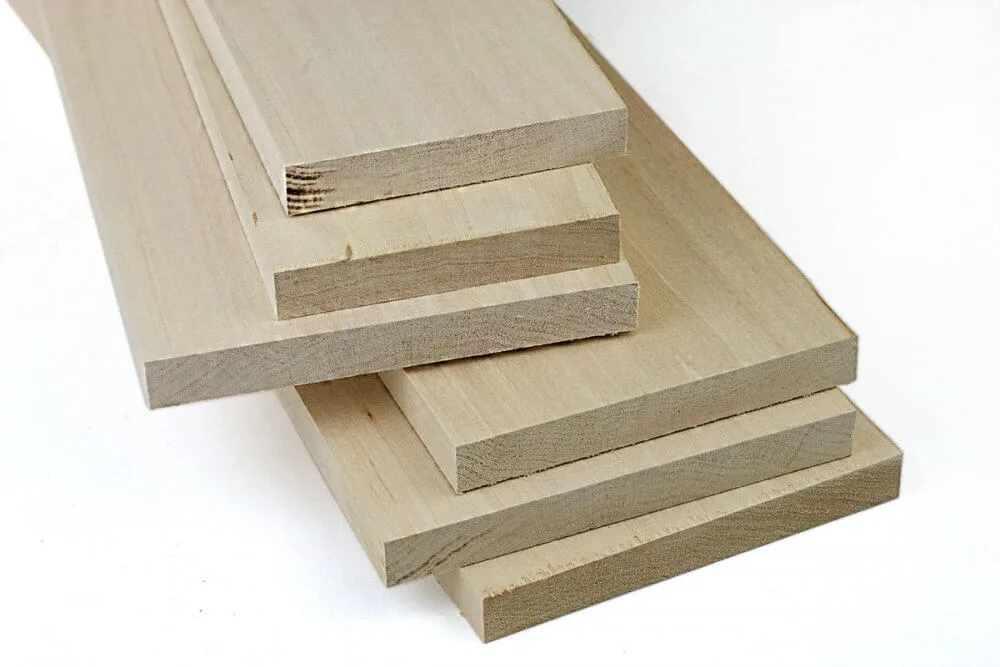
Όταν πρόκειται για αρχιτεκτονικά μοντέλα που χρειάζονται και τα δύο δύναμη και λεπτομέρεια, ξύλο είναι μια σταθερή επιλογή. Τροπικό δέντρο και μπάσσο είναι δύο από τις πιο δημοφιλείς επιλογές για τη δημιουργία ακριβείας, δομικά στοιχεία. Αυτά τα ξύλα είναι ελαφριά, εύκολο να κοπεί, και μπορεί να τριφτεί στην τελειότητα, που τα καθιστά ιδανικά για περίπλοκα σχέδια όπως πόρτες, παράθυρα, και πλαισίωση. Η επιλογή μεταξύ αυτών των παραδοσιακών υλικών και των νεότερων μεθόδων διερευνάται στον οδηγό μας Σύγχρονα σκάφη vs. Παραδοσιακή χειροκίνητη εργασία.
- Φόντα: Εύκολο στην κοπή, ανθεκτικό παρόλο που είναι ελαφρύ, και έχει λεπτή υφή για λεπτομερείς επιφάνειες.
- Μειονεκτήματα: Μπορεί να είναι δαπανηρό για μεγάλα μοντέλα και μπορεί να κοπεί ή να θρυμματιστεί εάν δεν χρησιμοποιηθεί σωστά.
- Καλύτερες χρήσεις: Λεπτομερή αρχιτεκτονικά χαρακτηριστικά (παράθυρα, πόρτες, καλούπια) και δομικά στοιχεία σε μοντέλα που χρειάζονται επιπλέον αντοχή.
Χαρτόνι/μοριοσανίδα: Το άλογο εργασίας
Χαρτόνι (ή νοβοπάν) μπορεί να μην έχει τη λάμψη του γυαλιστερού ακρυλικού, αλλά είναι ένα δοκιμασμένο και αληθινό αγαπημένο για κατασκευαστές αρχιτεκτονικών μοντέλων με προϋπολογισμό. Πυγμάχος ελαφρού βάρους, εύκολο να δουλέψεις, και φθηνό, Το χαρτόνι είναι συχνά το υλικό επιλογής για αρχικά μοντέλα και μαζικές μελέτες.
- Φόντα: Οικονομικά αποδοτική, εύκολο να δουλέψεις, και ευέλικτο σε πάχος και φινίρισμα.
- Μειονεκτήματα: Δεν έχει κατασκευαστεί για μεγάλες αποστάσεις; μπορεί να είναι σαθρό και μπορεί να λυγίσει ή να παραμορφωθεί με την πάροδο του χρόνου εάν δεν ενισχυθεί.
- Καλύτερες χρήσεις: Βασικά μοντέλα μάζας, δρόμους, τοπίο, και στοιχεία πλαισίου μεγάλης κλίμακας.
Φελλός: Το Textural Touch
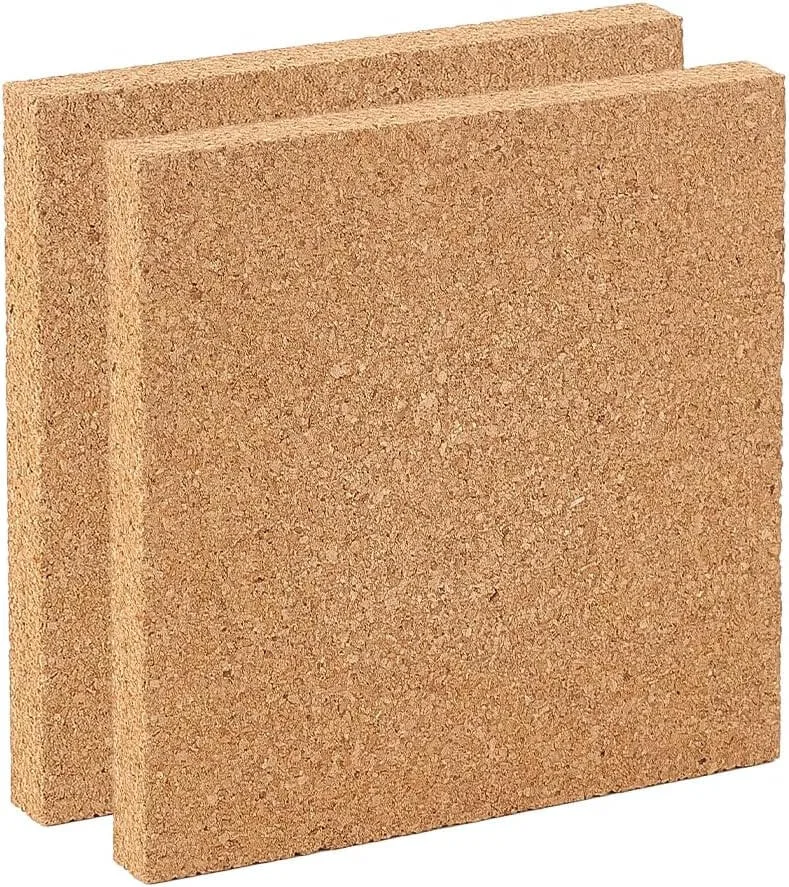
Όταν πρόκειται για υφή, φελλός είναι το βασικό υλικό για την προσθήκη αυτού του γήινου, απτική ποιότητα στα αρχιτεκτονικά μοντέλα. Είναι ελαφρύ, εύκολο να κοπεί, και ιδανικό για να προσθέσετε μια φυσική αισθητική στο σχέδιό σας. Είτε δημιουργείτε ορόφους ή στρώματα βάσης, Ο φελλός δίνει στο μοντέλο σας λίγο από αυτό Δεν ξέρω τι. Είναι ένα εξαιρετικό υλικό για τη δημιουργία ρεαλιστικών εδαφών, ένα θέμα που καλύπτουμε Τα μυστικά του ρεαλιστικού μοντέλου εξωραϊσμού.
- Φόντα: Πυγμάχος ελαφρού βάρους, παρέχει μοναδική υφή επιφάνειας, και κόβεται εύκολα.
- Μειονεκτήματα: Μπορεί να καταστραφεί εύκολα (χρωματιστός, σχισμένο, ή θρυμματισμένο) και θέλει προσοχή στο φινίρισμα.
- Καλύτερες χρήσεις: Επιφάνειες δαπέδων ή υφής, φυσικά φινιρίσματα ή λεπτομέρειες εξωραϊσμού, και στρώσεις βάσης για πρόσθετες λεπτομέρειες.
Σύγχρονα Υλικά: Τα νέα παιδιά στο μπλοκ
Αφρώδες σκάφος: Πυγμάχος ελαφρού βάρους & Έτοιμος για Οτιδήποτε
Αφρώδες σκάφος αποτελεί βασικό στοιχείο στην κατασκευή αρχιτεκτονικών μοντέλων, ιδιαίτερα όταν χρειάζεται να δημιουργήσετε μεγάλη κλίμακα μοντέλα πλαισίου ή μαζικές μελέτες γρήγορα. Είναι ελαφρύ, εύκολο να κοπεί, και προσφέρει καθαρό, αιχμηρές άκρες που θα κάνουν το μοντέλο σας να φαίνεται καθαρό και επαγγελματικό. Είτε εργάζεστε σε μοντέλα φόντου ή ένα ανάλυση τοποθεσίας, Η σανίδα αφρού είναι ένας γρήγορος τρόπος για να ζωντανέψετε το όραμά σας.
- Φόντα: Γρήγορη εργασία, σταθερό και ανθεκτικό για το βάρος του, και δημιουργεί καθαρές άκρες.
- Μειονεκτήματα: Μπορεί να είναι εύθραυστο εάν δεν τον χειριστείτε με προσοχή, και ευαίσθητη στις περιβαλλοντικές αλλαγές.
- Καλύτερες χρήσεις: Μοντέλα πλαισίου μεγάλης κλίμακας, εξερεύνηση σχεδιασμού σε πρώιμο στάδιο, και μοντέλα φόντου για πιο λεπτομερείς παρουσιάσεις.
Ακρυλικό (Πλεξιγκλάς): Διαφανής Τελειότητα
Αν ψάχνετε για ένα λείος, μοντέρνο υλικό που προσθέτει διαφάνεια και φως στο μοντέλο σας, ακρυλικό είναι ο δρόμος που πρέπει να πάτε. Αυτό ξεκάθαρο, Το πλαστικό υλικό είναι τέλειο για αναπαράσταση γυάλινες προσόψεις, παράθυρα, ή άλλα διαφανή αρχιτεκτονικά στοιχεία. Συν, Η γυαλιστερή του επιφάνεια αντανακλά όμορφα το φως, προσθέτοντας μια πινελιά πολυτέλεια σε οποιοδήποτε μοντέλο, ειδικά όταν συνδυάζεται με ένα προσεγμένο σχέδιο από τον οδηγό μας για το Στρατηγική χρήση του φωτισμού.
- Φόντα: Διαφανής, ευέλικτο για κοπή και διαμόρφωση, και παρέχει μια μοντέρνα αισθητική.
- Μειονεκτήματα: Απαιτεί ακρίβεια για τη σωστή κοπή και μπορεί εύκολα να γρατσουνιστεί.
- Καλύτερες χρήσεις: Γυάλινα στοιχεία (παράθυρα, πόρτες), κομψά φινιρίσματα για μοντέρνα σχέδια, και διακοσμητικά στοιχεία που πρέπει να αλληλεπιδρούν με το φως.
Πλαστική ύλη: Προμηθευτός & Λειτουργικός
Πλαστική ύλη είναι ένα από τα πιο προμηθευτός και πολύπλευρος υλικά για αρχιτεκτονικά μοντέλα. Είτε χτίζετε τοπογραφικά μοντέλα ή στοιχεία τοπίου, Το πλαστικό προσφέρει ευελιξία χωρίς να σπάει τα χρήματα. Είναι ελαφρύ, διαρκής, και εύκολο στη χειραγώγηση, καθιστώντας το αγαπημένο για έργα μεγαλύτερης κλίμακας που απαιτούν γρήγορη, οικονομικά αποδοτικές λύσεις.
- Φόντα: Πυγμάχος ελαφρού βάρους, προσιτό για μεγάλα έργα, και ευέλικτο για χύτευση και κοπή.
- Μειονεκτήματα: Ενδέχεται να απαιτείται στρώση για να επιτευχθούν ορισμένα ύψη και μπορεί να φαίνεται λιγότερο γυαλισμένο εάν δεν χρησιμοποιηθεί προσεκτικά.
- Καλύτερες χρήσεις: Τοπογραφικά μοντέλα, στοιχεία τοπίου όπως λόφους και δρόμοι, και μεγαλύτερο, απλούστερα μοντέλα που πρέπει να είναι οικονομικά αποδοτικά.
Ρητίνη: Λεπτομέρεια στα καλύτερά της
Για όσους θέλουν να πετύχουν περίπλοκες λεπτομέρειες, ρητίνη είναι η μυστική σάλτσα. Αυτό το υλικό υπερέχει στην αναπαραγωγή λεπτών υφών, δημιουργώντας ρεαλιστικό τοπίο, ακόμα και χειροτεχνία ειδώλια ή Χαρακτηριστικά νερού. Ενώ η εργασία με τη ρητίνη μπορεί να είναι πιο ακριβή και χρονοβόρα, τα αποτελέσματα αξίζουν τον κόπο, ειδικά όταν δημιουργείται με την ακρίβεια της τρισδιάστατης εκτύπωσης SLA.
- Φόντα: Ιδανικό για τη λήψη λεπτών λεπτομερειών και υφών, προσαρμόσιμο για σχεδόν οποιοδήποτε σχήμα, και ανθεκτικό μόλις σερβιριστεί.
- Μειονεκτήματα: Μπορεί να είναι ακριβό, ειδικά για μεγαλύτερα μοντέλα, και είναι χρονοβόρα η εργασία.
- Καλύτερες χρήσεις: Λεπτομέρειες και υφές μικρής κλίμακας, Χαρακτηριστικά νερού, εξωραϊσμός, και δημιουργία ρεαλιστικών μοντέλων για παρουσιάσεις υψηλής ποιότητας.
Μέταλλο (Αλουμίνιο, Χαλκός, Ατσάλι): Η δύναμη συναντά το στυλ
Όταν χρειάζεστε δύναμη και επιτήδευση, μέταλλο παραδίδει. Υλικά όπως αλουμίνιο, χαλκός, και ατσάλι είναι ιδανικά για δομικές λεπτομέρειες, ενίσχυση, ή αντιπροσωπεύουν φινιρίσματα υψηλής ποιότητας. Αυτά τα μέταλλα προσθέτουν α άμεμπτος, βιομηχανικός αίσθηση σε οποιοδήποτε μοντέλο, καθιστώντας τα τέλεια για σχέδια με μοντέρνα, στιβαρή αισθητική.
- Φόντα: Ανθεκτικό και σταθερό, εύπλαστο για διαμόρφωση, και παρέχει υψηλό επίπεδο, γυαλισμένο φινίρισμα.
- Μειονεκτήματα: Απαιτεί ειδικά εργαλεία και τεχνογνωσία για να εργαστείτε και μπορεί να είναι ακριβό.
- Καλύτερες χρήσεις: Δομική ενίσχυση, λεπτομερή φινιρίσματα υψηλής ποιότητας, και αρχιτεκτονικά στοιχεία όπως κάδρα, στήλες, και δοκάρια.
Αυτή η ολοκληρωμένη ματιά στα υλικά παρέχει την ποικιλία που χρειάζεστε για κάθε έργο. Το σωστό υλικό μπορεί να ανεβάσει το σχέδιό σας, καθιστώντας το πιο λεπτομερές, διαρκής, και οπτικά εντυπωσιακό. Είτε έχετε προϋπολογισμό είτε στοχεύετε στην τελειότητα, Η κατανόηση των δυνατών και των αδυναμιών κάθε υλικού θα εξασφαλίσει ότι το αρχιτεκτονικό σας μοντέλο είναι έτοιμο να εντυπωσιάσει.
Φιλικά προς το περιβάλλον και βιώσιμα υλικά για αρχιτεκτονικά μοντέλα
Βιοδιασπώμενα υλικά: Το πράσινο είναι το νέο μαύρο
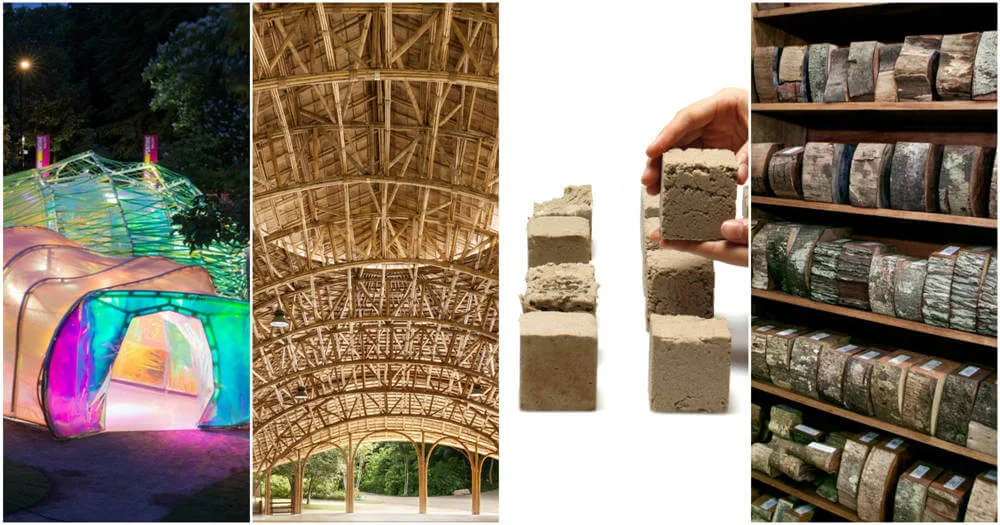
Η βιωσιμότητα δεν είναι απλώς μια λέξη-κλειδί - είναι μελλοντικός της αρχιτεκτονικής. Καθώς ο κόσμος γίνεται πιο πράσινος, το ίδιο συμβαίνει και με τον τρόπο που δημιουργούμε αρχιτεκτονικά μοντέλα. Εισάγω βιοαποικοδομήσιμα υλικά—οι φιλικοί προς το περιβάλλον ήρωες που κάνουν τα παραδοσιακά υλικά να φαίνονται λίγο… ντεμοντέ. Αυτά τα υλικά δεν είναι μόνο καλά για τον πλανήτη, μπορούν επίσης να παραδώσουν εντυπωσιακά αποτελέσματα στα μοντέλα σας, Όλα αυτά μειώνοντας το περιβαλλοντικό σας αποτύπωμα.
- Παραδείγματα: Ανακυκλωμένα πλαστικά, αφροί φυτικής προέλευσης (από άμυλο καλαμποκιού ή μυκήλιο μανιταριών), και βιοδιασπώμενες ρητίνες.
- Φόντα: Φιλικό προς το περιβάλλον, μειώνει τα απόβλητα, και ευθυγραμμίζεται με τις πρακτικές πράσινων κτιρίων.
- Μειονεκτήματα: Μπορεί να μην είναι πάντα τόσο ανθεκτικό ή μακράς διαρκείας όσο τα παραδοσιακά υλικά και μπορεί να μην έχει τη στιλβωμένη εμφάνιση για μοντέλα παρουσίασης υψηλών προδιαγραφών.
- Καλύτερες χρήσεις: Έργα με επίκεντρο τη βιωσιμότητα και εννοιολογικά ή φιλικά προς το περιβάλλον μοντέλα.
Ανακυκλωμένα Υλικά: Ο Κύκλος της Ζωής (Για Υλικά)
Εάν δεν είστε σε βιοαποικοδομήσιμα υλικά, υπάρχει πάντα μια σταθερή επιστροφή: ανακυκλωμένα υλικά. Αυτά τα υλικά είναι τα αληθινοί ανακυκλωτές του αρχιτεκτονικού κόσμου, παίρνοντας κάτι παλιό και δίνοντάς του μια νέα ζωή. Ανακυκλωμένο χαρτί, χαρτόνι, και πλαστικά είδη δεν είναι μόνο καλά για το περιβάλλον - είναι επίσης ευέλικτα και εκπληκτικά αποτελεσματικά όταν δημιουργούν σχετικός με την σύλληψη ή αντίληψη και κατασκευαστικός μοντέλα.
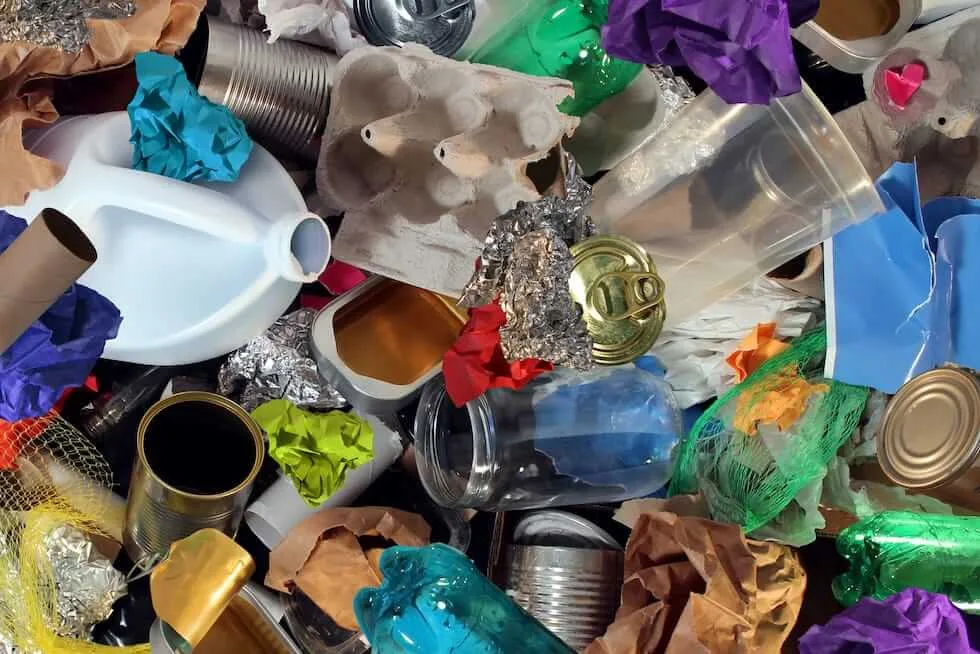
- Παραδείγματα: Ανακυκλωμένο χαρτί/χαρτόνι και ανακυκλωμένα πλαστικά.
- Φόντα: Ανεκτός, μειώνει τα απόβλητα, και στέλνει ένα ισχυρό οικολογικό σχεδιαστικό μήνυμα.
- Καλύτερες χρήσεις: Μικρής κλίμακας εννοιολογικά μοντέλα και περιβαλλοντικά ευαίσθητα έργα.
| Τύπος υλικού | Παραδείγματα | Φόντα | Καλύτερες χρήσεις |
|---|---|---|---|
| Βιοδιασπώμενα υλικά | Ανακυκλωμένα πλαστικά, αφροί φυτικής προέλευσης, βιοδιασπώμενες ρητίνες | Φιλικό προς το περιβάλλον, μειώνει τα απόβλητα, ευθυγραμμίζεται με τις πρακτικές πράσινων κτιρίων | Έργα που επικεντρώνονται στην περιβαλλοντική βιωσιμότητα |
| Ανακυκλωμένα Υλικά | Ανακυκλωμένο χαρτί/χαρτόνι, ανακυκλωμένα πλαστικά | Ανεκτός, μειώνει τα απόβλητα, σχεδιασμός με οικολογική συνείδηση | Μικρής κλίμακας μοντέλα, περιβαλλοντικά ευαίσθητα έργα |
Με την ενσωμάτωση βιοδιασπώμενο και ανακυκλωμένα υλικά, οι αρχιτέκτονες και οι σχεδιαστές μπορούν να υπερασπιστούν τη βιωσιμότητα, ενώ εξακολουθούν να προσφέρουν αποτελεσματικά και αισθητικά όμορφα μοντέλα. Αυτά τα υλικά αποδεικνύουν ότι η θετική επίδραση στο περιβάλλον δεν σημαίνει συμβιβασμό στην ποιότητα ή τη δημιουργικότητα.
Εξειδικευμένα Υλικά για Λεπτομερή Αρχιτεκτονικά Μοντέλα
Ποτήρι: Η διαφάνεια στα καλύτερά της
Αν στοχεύετε σε ακρίβεια και ρεαλισμός, τότε ποτήρι πρέπει να βρίσκεται στην κορυφή της λίστας υλικών σας. Αυτό το υλικό δεν είναι μόνο για παράθυρα στον πραγματικό κόσμο - είναι η καλύτερη επιλογή για δημιουργία διαφανή χαρακτηριστικά και γυάλινες προσόψεις σε αρχιτεκτονικά μοντέλα. Θέλετε να κάνετε το κτήριο σας να μοιάζει σαν να λάμπει κάτω από τον ήλιο ή να αστράφτει κάτω από τεχνητά φώτα? Το γυαλί είναι το εισιτήριό σας αντανακλαστικό φως και επιδεικνύοντας διαφάνεια.
- Φόντα: Απαράμιλλη σαφήνεια και ρεαλισμός.
- Μειονεκτήματα: Εύθραυστο και απαιτεί ακρίβεια, εξειδικευμένες τεχνικές κοπής.
- Καλύτερες χρήσεις: Γυάλινες προσόψεις, παράθυρα, πόρτες, και κομψός, σύγχρονα κτίρια.
Συνθετικά Υφάσματα: Το ύφασμα της φύσης

Μερικές φορές, πρέπει να ανεβάσετε το μοντέλο σας στο επόμενο επίπεδο με μερικούς ρεαλιστική υφή. Εισάγω συνθετικά υφάσματα, οι αφανείς ήρωες όταν πρόκειται για προσθήκη χαρακτηριστικά τοπίου και υφές εδάφους. Είτε πρόκειται για λόφους, ανάγλυφες επιφάνειες, ή ένα λαμπερό σώμα νερού, Τα συνθετικά υφάσματα βοηθούν να ζωντανέψει το περιβάλλον του μοντέλου σας με μια πινελιά ευκαμψία και λεπτομέρεια.
- Φόντα: Μπορεί να αναπαραχθεί μαλακό, οργανικές υφές ρεαλιστικά και είναι ευέλικτα στη διαμόρφωση.
- Μειονεκτήματα: Μπορεί να είναι δύσκολο να τοποθετηθεί και να κολληθεί σε στενούς χώρους.
- Καλύτερες χρήσεις: Χαρακτηριστικά τοπίου όπως γρασίδι ή χωράφια, προσομοίωση υδάτινων σωμάτων, και δημιουργία άλλων φυσικών εδαφών.
Φωτοφωταύγεια Υλικά: Λάμψη στο σκοτάδι? Ναί, Παρακαλώ.
Ήθελα ποτέ το μοντέλο σου λάμψη— κυριολεκτικά? εκεί είναι που φωτοφωταύγεια υλικά μπαίνουν στο παιχνίδι. Αυτά τα υλικά απορροφούν το φως και στη συνέχεια το απελευθερώνουν με τη μορφή μιας απαλής λάμψης μόλις σβήσουν τα φώτα. Είναι ιδανικά για δημιουργία δραματικά εφέ φωτισμού ή επισημαίνοντας συγκεκριμένα χαρακτηριστικά του μοντέλου σας, σαν διαδρομές εξόδου κινδύνου ή συστήματα φωτισμού. Αποτελούν βασικό συστατικό του μέλλοντος, όπως περιγράφεται στον οδηγό μας για Διαδραστική τεχνολογία και AR.
- Φόντα: Δημιουργεί μια δραματική, μοναδικός “εκπληκτική επιτυχία” παράγοντας και τονίζει χαρακτηριστικά στο σκοτάδι.
- Μειονεκτήματα: Μπορεί να είναι δαπανηρή και μπορεί να μην είναι πρακτική για όλα τα έργα.
- Καλύτερες χρήσεις: Επισήμανση συστημάτων φωτισμού ή εξόδων κινδύνου, δημιουργώντας μοναδικά νυχτερινά οπτικά εφέ, και κατασκευή διαδραστικών μοντέλων.
| Τύπος υλικού | Παραδείγματα | Φόντα | Καλύτερες χρήσεις |
|---|---|---|---|
| Ποτήρι | Διαφανή στοιχεία, γυάλινες προσόψεις | Σαφήνεια, ρεαλισμός, ανακλαστικές ιδιότητες | Παράθυρα, προσόψεις, σύγχρονα αρχιτεκτονικά χαρακτηριστικά |
| Συνθετικά Υφάσματα | Υφάσματα τοπίου, υδάτινα σώματα, ανάγλυφες επιφάνειες | Ρεαλιστικές υφές, ευκαμψία | Μοντελοποίηση εδάφους, χαρακτηριστικά τοπίου, Χαρακτηριστικά νερού |
| Φωτοφωταύγεια Υλικά | Χρώματα και πλαστικά που λάμπουν στο σκοτάδι | Δραματικά εφέ, μοναδικός φωτισμός, αλληλεπιδραστικός | Συστήματα φωτισμού, εξόδους κινδύνου, νυχτερινά γραφικά |
Ενσωμάτωση εξειδικευμένα υλικά προσθέτει βάθος, ρεαλισμός, και οπτική ίντριγκα. Είτε στοχεύετε σε μοντέρνα κομψότητα με κομψές γυάλινες προσόψεις ή α δραματική λάμψη, αυτά τα υλικά αναβαθμίζουν τα σχέδιά σας και βοηθούν να πείτε μια πιο δυναμική ιστορία. Με τα κατάλληλα εργαλεία και λίγη δημιουργικότητα, τα μοντέλα σας δεν θα είναι απλώς ακριβή - θα είναι έκτακτος.
Επιλέγοντας το κατάλληλο υλικό για το αρχιτεκτονικό σας μοντέλο
Τύπος σχεδίασης: Προσαρμογή του υλικού σας στο σκοπό του μοντέλου
Η επιλογή του τέλειου υλικού για το αρχιτεκτονικό μοντέλο σας δεν είναι μόνο να επιλέξετε αυτό που φαίνεται καλό - είναι να ταιριάξετε το υλικό με το σκοπός του μοντέλου. Σκεφτείτε το σαν να επιλέγετε το σωστό ζευγάρι παπούτσια για μια εκδήλωση: Δεν θα φορούσατε σαγιονάρες σε ένα δείπνο με μαύρη γραβάτα, και δεν θα φορούσατε παπούτσια σε μια πεζοπορία (εκτός κι αν είστε κάποιου είδους λάτρης της μόδας). Το ίδιο ισχύει και για τα αρχιτεκτονικά μοντέλα.
Για εννοιολογική δοκιμή, Η ταχύτητα και η ευελιξία είναι βασικά. Χρειάζεστε υλικά που σας επιτρέπουν να εξερευνήσετε γρήγορα ιδέες, δοκιμαστικά σχήματα, και επαναλάβετε. Χαρτί, χαρτόνι, και σανίδα αφρού είναι τα καλύτερα στοιχήματά σας εδώ. Είναι ελαφριές, εύκολο να κοπεί, και αρκετά φθηνό ώστε να μην αισθάνεστε ένοχοι που πετάτε μερικές εκδόσεις πριν προσγειωθείτε στη σωστή.
Όταν έρθει η ώρα να σοβαρευτούμε, και το μοντέλο οδεύει προς παρουσίαση ή δέσμευση πελατών, Οι υλικές σας επιλογές πρέπει να είναι πιο εκλεπτυσμένες. Για μοντέλα υψηλής λεπτομέρειας που θα χρησιμοποιηθούν για να εντυπωσιάσουν τους επενδυτές ή τους ενδιαφερόμενους, υλικά όπως ξύλο, ακρυλικό, και ρητίνη είναι ιδανικά. Αυτά τα υλικά όχι μόνο φαίνονται πιο γυαλισμένα, αλλά παρέχουν επίσης α καθαρότερο φινίρισμα και δομική ακεραιότητα. Οι πελάτες αναμένουν επιτήδευση και ακρίβεια σε αυτό το στάδιο—έτσι το υλικό πρέπει να το αντικατοπτρίζει.
Πρακτικές Θεωρήσεις: Η Logistics της Επιλογής Υλικού
Όλοι αγαπάμε μια πρόκληση καλού σχεδιασμού, αλλά ας είμαστε αληθινοί-πρακτικότητα παίζει μεγάλο ρόλο στην επιλογή υλικού. Αντοχή, κόστος, ευκολία χρήσης, και διαθεσιμότητα πρέπει να είναι τα αστέρια που σας οδηγούν. Παρά όλα αυτά, δεν έχει νόημα η επιλογή του πιο φανταχτερό υλικό εάν είναι πολύ ακριβό ή δύσκολο να εργαστείς.
- Αντοχή: Πόσο καλά κρατάει το υλικό? Θα αντέξει στη δοκιμασία του χρόνου, ή είναι εύθραυστο και επιρρεπές σε ζημιές? Για μακροπρόθεσμα έργα, ξύλο, ακρυλικό, και μέταλλο είναι ισχυροί διεκδικητές. Για γρήγορα πρωτότυπα ή εννοιολογικά μοντέλα, υλικά όπως χαρτόνι και αφρός μπορεί να λειτουργήσει καλά, αλλά δεν θα διαρκέσουν για πάντα.
- Κόστος: Ο προϋπολογισμός παίζει σημαντικό ρόλο. Εάν εργάζεστε με περιορισμένους πόρους, προτιμήστε οικονομικά υλικά που δεν θυσιάζουν την ποιότητα. Χαρτόνι, σανίδα αφρού, και ανακυκλωμένα υλικά μπορεί να σας χαρίσει πολλά για τα λεφτά σας.
- Ευκολία χρήσης: Μερικά υλικά είναι ένα αεράκι για να δουλέψεις, ενώ άλλα απαιτούν ειδικά εργαλεία και δεξιότητες. Αφρώδες σκάφος? Εύκολος. Ακρυλικό ή μέταλλο? Όχι τόσο πολύ, εκτός αν έχετε κόφτη λέιζερ και κάποια εμπειρία κοπή ακριβείας.
- Διαθεσιμότητα: Βεβαιωθείτε ότι μπορείτε εύκολα να πιάσετε τα υλικά που χρειάζεστε. Εάν βιάζεστε, ένα ταξίδι στο τοπικό κατάστημα υλικού ή σε κατάστημα με είδη τέχνης χαρτόνι και σανίδα αφρού είναι πολύ πιο εύκολο από την προμήθεια ειδικότητας ρητίνη ή μέταλλο.
Ικανότητα και εργαλεία: Η πολυπλοκότητα προσθέτει ένα άλλο επίπεδο
Δεν είναι μυστικό ότι ορισμένα υλικά είναι πιο περίπλοκα στην εργασία από άλλα. Ακριβώς όπως ορισμένες συνταγές απαιτούν μια μηχανή sous-vide και ένα πασπαλάκι γκουρμέ αλάτι, με άλλους τα πάνε καλά στιγμιαία νουντλς. Εάν εργάζεστε με ένα απλό σχέδιο και έχετε μια αυστηρή προθεσμία, η πολυπλοκότητα του υλικού δεν θα έχει μεγάλη σημασία. Αλλά αν βουτάς σε κάτι περισσότερο πολύπλοκος, να είστε έτοιμοι να βγάλετε τα μεγάλα όπλα —ή τουλάχιστον τα κατάλληλα εργαλεία.
Ορισμένα υλικά απαιτούν συγκεκριμένα εργαλεία, και αν δεν έχετε πρόσβαση σε αυτά, μπορεί να καταλήξεις απογοητευμένος (και πιθανώς με μερικές άστοχες περικοπές). Ακρυλικό και ξύλο μπορεί να είναι ένα όνειρο να συνεργαστείς αν έχεις πρόσβαση κόφτες λέιζερ ή πριόνια ακριβείας, αλλά χωρίς αυτά τα εργαλεία, μπορούν γρήγορα να γίνουν εφιάλτης. Υλικά όπως αφρός ή χαρτόνι? Είναι επιεικής και εύκολο να τα χειριστείτε με βασικά χειροτεχνικά μαχαίρια και ψαλίδια—δεν απαιτούνται ειδικά εργαλεία.
Όσο πιο σύνθετο είναι το υλικό, όσο περισσότερος χρόνος και επιδεξιότητα θα χρειαστείτε. Ετσι, να είσαι ειλικρινής με τον εαυτό σου: Είστε έτοιμοι για την πρόκληση? Έχετε τα απαραίτητα εργαλεία? Εάν δεν είστε σίγουροι, ίσως είναι καλύτερα να πάμε με κάτι απλούστερο και πιο επιεικής.
Προτιμήσεις πελάτη: Πράσινο ή Καθαρό?
Δεν επικεντρώνεται κάθε πελάτης αποκλειστικά στην αισθητική. Μερικοί μπορεί να έχουν α συγκεκριμένη φιλοσοφία θέλουν να ευθυγραμμιστούν με, και τα υλικά μπορούν να παίξουν μεγάλο ρόλο εδώ. Για πελάτες με οικολογική συνείδηση, ανεκτός και ανακυκλωμένα υλικά αποτελούν προτεραιότητα. Για άλλους, μπορεί να είναι μετά από μια συγκεκριμένη ματιά — ας πούμε, ένα κομψό μοντέρνο φινίρισμα ή ένα αγροτικός, φυσική αίσθηση.
- Υλικά φιλικά προς το περιβάλλον: Εάν η βιωσιμότητα είναι προτεραιότητα, σκεφτείτε να ενσωματώσετε βιοαποικοδομήσιμα υλικά, ανακυκλωμένο χαρτί, ξύλο, ή ακόμα και αφροί φυτικής προέλευσης. Είναι ιδανικά για πελάτες που θέλουν το σχέδιό τους να ευθυγραμμιστεί πρακτικές πράσινου κτιρίου και περιβαλλοντική διαχείριση.
- Αισθητικές Προτιμήσεις: Ορισμένοι πελάτες μπορεί να έχουν μια προτίμηση για μια συγκεκριμένη αισθητική υλικού—είτε τους αρέσει φινιρίσματα υψηλής ποιότητας σαν ακρυλικό και μέταλλο, ή θέλουν κάτι που αισθάνεται γήινος και αυθεντικός σαν ξύλο ή φελλός. Η κατανόηση του στυλ τους θα σας βοηθήσει να κατευθύνετε τις επιλογές υλικών σας.
| Θεώρηση | Τι πρέπει να έχετε κατά νου | Ιδανικά Υλικά |
|---|---|---|
| Τύπος σχεδίασης | Επιλέξτε υλικά που ταιριάζουν στη σκηνή—εννοιολογικά, εργαζόμενος, ή παρουσίαση. | Σχετικός με την σύλληψη ή αντίληψη: Αφρώδες σκάφος, χαρτόνι; Παρουσίαση: Ξύλο, ακρυλικό, ρητίνη |
| Πρακτικές Θεωρήσεις | Αντοχή, κόστος, ευκολία χρήσης, και η διαθεσιμότητα όλα έχουν σημασία για την επιλογή υλικού. | Φιλικό προς τον προϋπολογισμό: Χαρτόνι, αφρός; Διαρκής: Ξύλο, ακρυλικό, μέταλλο |
| Ικανότητα και εργαλεία | Τα υλικά απαιτούν διαφορετικά εργαλεία και δεξιότητες—να είστε ειλικρινείς σχετικά με τις ικανότητές σας. | Εύχρηστος: Αφρώδες σκάφος, χαρτόνι; Συγκρότημα: Ακρυλικό, ξύλο, μέταλλο |
| Προτιμήσεις πελάτη | Σκεφτείτε σχέδια με οικολογική συνείδηση ή συγκεκριμένες προτιμήσεις υλικών. | Οικολογικό: Ανακυκλωμένα υλικά, βιοδιασπώμενες επιλογές; Αισθητικός: Ακρυλικό, ξύλο |
Επιλέγοντας το σωστό υλικό γιατί το αρχιτεκτονικό σας μοντέλο δεν είναι μια απόφαση που πρέπει να ληφθεί σοβαρά υπόψη. Είναι να βρείτε την τέλεια ισορροπία μεταξύ σας σχεδιαστικούς στόχους, προϋπολογισμός, και διαθέσιμα εργαλεία. Με λίγη σκέψη, θα έχετε το τέλειο υλικό για το έργο σας—είτε πρόκειται για ένα γρήγορο εννοιολογικό μοντέλο είτε για μια εντυπωσιακή παρουσίαση που εντυπωσιάζει τους πελάτες σας. Ετσι, διάλεξε με σύνεση, και θυμηθείτε, το υλικό που επιλέγετε είναι εξίσου σημαντικό με το ίδιο το σχέδιο!
Συμβουλές για εργασία με υλικά αρχιτεκτονικού μοντέλου
Χειρισμός Υλικών: Κατασκευάζοντας το μοντέλο σας με ακρίβεια
Όταν πρόκειται για αρχιτεκτονική μακέτα, ο σωστός χειρισμός των υλικών η μισή μάχη. Είτε κόβεις, κόλληση, ή φινίρισμα, κάθε υλικό έχει τις δικές του ιδιορρυθμίες, και η κατοχή αυτών είναι που διαχωρίζει τους ερασιτέχνες από τους επαγγελματίες. Σκεφτείτε το σαν να ψήνετε ένα κέικ - δεν μπορείτε απλώς να ρίξετε τα υλικά μαζί και να ελπίζετε για το καλύτερο. Χρειάζεστε τις σωστές τεχνικές, εργαλεία, και λίγη φινέτσα.
Υλικά Κοπής:
Όταν πρόκειται για κοπή, η ακρίβεια είναι το κλειδί. Δεν θέλετε να καταλήξετε με οδοντωτές άκρες σε ένα καθαρό σχέδιο. Για χαρτί, χαρτόνι, και σανίδα αφρού, ένα κοφτερό χρηστικό μαχαίρι είναι ο καλύτερός σου φίλος. Εάν εργάζεστε με πιο χοντρά υλικά όπως το ξύλο, θα θελεις κατι πιο δυνατο-χειροπρίονα, παζλ, ή ακόμα και α κόφτης λέιζερ για εξαιρετικά λεπτές κοπές. Να μετράτε πάντα δύο φορές, κόψτε μια φορά! Και μην ξεχνάτε την ασφάλεια - φροντίστε να χρησιμοποιήσετε μια σταθερή επιφάνεια κοπής (σαν χαλάκι κοπής) για να προστατεύσετε τόσο τα υλικά όσο και την επιφάνεια εργασίας σας.
Υλικά συγκόλλησης:
Όταν πρόκειται για τη συγκόλληση υλικών μεταξύ τους, το δικαίωμα συγκολλητικός μπορεί να φτιάξει ή να σπάσει το μοντέλο σας. Κόλλα ξύλου κάνει θαύματα για ξύλο και τροπικό δέντρο έργα, ενώ κόλλα ασφαλή για αφρό είναι το ιδανικό μέρος για οτιδήποτε βασίζεται σε αφρό. Να είστε προσεκτικοί με την υπερκόλλα - είναι γρήγορη και δυνατή, αλλά αν δεν προσέχεις, μπορεί να κάνει χάος. Ακρυλικό τσιμέντο είναι απαραίτητο για το ακρυλικό—αυτή η κόλλα λιώνει ελαφρώς τις άκρες, σχηματίζοντας έναν ισχυρό δεσμό που μοιάζει σαν να είναι σχεδόν απρόσκοπτος.
Ολοκληρώνοντας το μοντέλο σας:
Μετά από όλο αυτό το κόψιμο και το κόλλημα, θα πρέπει να βεβαιωθείτε ότι το μοντέλο σας έχει α καθαρός, γυαλισμένο φινίρισμα. Για ξύλο, τρίψιμο είναι το κλειδί για την εξομάλυνση των τραχιών άκρων. Ακρυλικό μπορεί να γυαλιστεί με ένα μαλακό πανί ή ειδική γυαλιστική ένωση για αυτό το λαμπερό, επαγγελματική εμφάνιση. Θυμάμαι: λίγο πάει πολύ, οπότε προσέξτε να μην το παρακάνετε — διαφορετικά, θα βρείτε τον εαυτό σας να απομακρύνει όλη τη σκληρή δουλειά σας.
Εργαλεία και Εξοπλισμός: Τα σωστά εργαλεία για τη δουλειά
Όταν πρόκειται για αρχιτεκτονικά μοντέλα, εργαλεία και εξοπλισμός μπορεί να είναι η διαφορά μεταξύ μιας απογοητευτικής ημέρας λαθών και μιας ομαλής ημέρας, επιτυχημένο έργο. Δεν χρειάζεστε ένα εργαστήριο γεμάτο gadget για να ολοκληρώσετε τη δουλειά, αλλά έχοντας τα σωστά εργαλεία θα κάνει τη ζωή σας πολύ πιο εύκολη.
Κόφτες λέιζερ για ακρυλικά:
Οι κόφτες λέιζερ είναι οι ροκ σταρ του αρχιτεκτονικού κόσμου κατασκευής μοντέλων. Σας επιτρέπουν να κόψετε ακρυλικό, ξύλο, πλαστική ύλη, και ακόμη και λεπτό μέταλλο με ακρίβεια. Αυτά τα μηχανήματα χρησιμοποιούν λέιζερ για να είναι τέλεια, ομαλές περικοπές, μειώνοντας την πιθανότητα ατελειών. Εάν εργάζεστε σε μια λεπτομερή μοντέλο παρουσίασης, ένας κόφτης λέιζερ θα σας βοηθήσει να δημιουργήσετε μια χαρά, ευκρινείς λεπτομέρειες με ευκολία.
Αφροκόφτες για Αφροσανίδα:
Για γρήγορα, καθαρές τομές σανίδα αφρού ή πολυστυρένιο, ένα αφροκόφτης είναι το βασικό σας εργαλείο. Αυτά τα εργαλεία χρησιμοποιούν ένα θερμαινόμενο σύρμα για να κόψουν τον αφρό σαν ένα ζεστό μαχαίρι μέσα στο βούτυρο. Είναι γρήγορο, καθαρός, και δεν θα σας αφήσει με ένα σωρό από μικροσκοπικά ψίχουλα αφρού. Απλώς φροντίστε να εργάζεστε σε καλά αεριζόμενο χώρο - ο καμένος αφρός δεν είναι ακριβώς μια ευχάριστη μυρωδιά.
Μαχαίρια χειροτεχνίας για χαρτί και χαρτόνι:
Για χαρτί, χαρτόνι, και νοβοπάν, ένα μαχαίρι χειροτεχνίας είναι ο καλύτερός σου φίλος. Είναι φτηνό, αξιόπιστος, και εύκολο στον έλεγχο για περίπλοκα κοψίματα. Βεβαιωθείτε ότι χρησιμοποιείτε μια φρέσκια λεπίδα για να αποφύγετε τυχόν θαμπά, κουρελιασμένες άκρες — εξάλλου, Το φινίρισμα του μοντέλου σας είναι τόσο καλό όσο και τα εργαλεία που χρησιμοποιείτε.
Κυβερνήτες, Πρότυπα, και Νυστέρια:
Είτε κόβετε είτε μετράτε, η ακρίβεια είναι το κλειδί. Ένα καλό μεταλλικός χάρακας θα εξασφαλίσει ότι οι τομές σας είναι ίσιες, ενώ πρότυπα να σας βοηθήσει να αποκτήσετε σταθερά σχήματα πάντοτε. Για λεπτομερείς περικοπές ή περίπλοκα σχέδια, ένα χειρουργικό νυστέρι προσφέρει μεγαλύτερη ακρίβεια από ένα κανονικό μαχαίρι χειροτεχνίας.
Συνήθη λάθη προς αποφυγή: Μάθετε από τους επαγγελματίες (και τα Fails)
Ακόμη και έμπειροι επαγγελματίες μπορούν να γλιστρήσουν κατά τη διάρκεια της κατασκευής μοντέλων. Αλλά με λίγα τεχνογνωσία, μπορείτε να αποφύγετε τα λάθη του πρωτάρη που μετατρέπουν ένα καλό μοντέλο σε καταστροφή. Εδώ είναι μερικά κοινές παγίδες να προσέχεις:
Ανώμαλες τομές:
Εάν οι περικοπές σας είναι ανομοιόμορφες, ολόκληρο το μοντέλο μπορεί να αρχίσει να φαίνεται ατημέλητο. Είτε κόβετε ξύλα, αφρός, ή ακρυλικό, μετρήστε δύο φορές, κόψτε μια φορά. Και μην το βιάζεστε - η ακρίβεια έχει μεγαλύτερη σημασία από την ταχύτητα. Ένα καλό, καθαρό κόψιμο σημαίνει ότι τα κομμάτια σας θα ταιριάζουν τέλεια μεταξύ τους, εξοικονομώντας χρόνο και απογοήτευση μακροπρόθεσμα.
Χρησιμοποιώντας τη λάθος κόλλα:
Δεν δημιουργούνται όλες οι κόλλες ίσες. Η χρήση λανθασμένης κόλλας μπορεί να προκαλέσει αντιαισθητικά σημάδια, αδύναμους δεσμούς, ή κολλώδεις ακαταστάσεις. Για παράδειγμα, χρήση Κόλλα PVA επί ακρυλικό μπορεί να οδηγήσει σε νεφελώδη, ανομοιόμορφες ραφές. Ακρυλικό τσιμέντο ή κόλλα ασφαλή για αφρό θα κάνει το κόλπο. Βεβαιωθείτε ότι έχετε διαβάσει την ετικέτα, και πάντα να δοκιμάζετε την κόλλα σε ένα σκραπ πριν δεσμευτείτε για ολόκληρο το μοντέλο.
Λανθασμένος υπολογισμός ποσοτήτων υλικού:
Ένα από τα πιο απογοητευτικά πράγματα στην κατασκευή μοντέλων είναι να τελειώνουν τα υλικά στα μισά του δρόμου. Δεν θέλετε να είστε στη μέση της δημιουργίας σας αριστούργημα, μόνο για να συνειδητοποιήσετε ότι σας λιγοστεύουν μερικά φύλλα αφρού ή ένα ακρυλικό πάνελ. Για να αποφευχθεί αυτό, σχεδιάστε εκ των προτέρων— κάντε μετρήσεις και λάβετε υπόψη κάποιο επιπλέον υλικό για να λάβετε υπόψη τα λάθη, δοκίμια, ή αλλαγές στο σχεδιασμό.
Δεν λαμβάνεται υπόψη η συρρίκνωση υλικού:
Ορισμένα υλικά όπως αφρός ή πλαστική ύλη μπορεί να συρρικνωθεί ή να επεκταθεί ανάλογα με το περιβάλλον. Εάν κολλάτε ένα κομμάτι και έχει τη δυνατότητα να μαζεύω, θα καταλήξετε με κενά ή κακή ευθυγράμμιση μόλις ρυθμιστεί. Να λαμβάνετε πάντα υπόψη αυτούς τους παράγοντες κατά τη μέτρηση και τη συναρμολόγηση του μοντέλου σας.
| Λάθος | Τι να Αποφύγετε | Πώς να το διορθώσετε |
|---|---|---|
| Ανώμαλες τομές | Βιαστικά μέσα από κοψίματα ή χρήση λάθος εργαλείων. | Χρησιμοποιήστε ένα κοφτερό μαχαίρι χειροτεχνίας, μετρήστε δύο φορές, και κόβουμε αργά. |
| Λάθος κόλλα | Χρησιμοποιώντας λάθος κόλλα για υλικά. | Επιλέξτε κόλλες με βάση τον τύπο του υλικού (Π.χ., ακρυλικό τσιμέντο για ακρυλικό). |
| Λανθασμένος υπολογισμός των ποσοτήτων | Εξάντληση υλικών στα μέσα του έργου. | Σχεδιάστε εκ των προτέρων, μετρήστε δύο φορές, και αγοράστε επιπλέον υλικά. |
| Συρρίκνωση υλικού | Αγνοώντας τη συρρίκνωση ή τη διαστολή σε ορισμένα υλικά. | Λάβετε υπόψη τη συμπεριφορά του υλικού κατά το σχεδιασμό και τη συναρμολόγηση. |
Ακολουθώντας αυτές τις συμβουλές, θα είστε σε καλό δρόμο για τη δημιουργία αρχιτεκτονικών μοντέλων που είναι ακριβής, επαγγελματίας, και διαρκής. Κατακτήστε την τέχνη του χειρισμού υλικών, χρησιμοποιώντας τα κατάλληλα εργαλεία, και αποφεύγοντας κοινά λάθη, και τα μοντέλα σας θα ξεχωρίσουν για όλους τους σωστούς λόγους. Με την κατάλληλη προετοιμασία, θα μετατρέψετε αυτό το ταπεινό κομμάτι αφρού ή ακρυλικού σε α αριστούργημα μοντελοποίησης που λάμπει στο σχεδιασμό και την εκτέλεση.
Σύναψη: Επιλέγοντας τα τέλεια υλικά για τα αρχιτεκτονικά σας μοντέλα
Βουλώνω πάλι: Το σωστό υλικό για τη σωστή σκηνή
Επιλέγοντας το τέλειο υλικό γιατί το αρχιτεκτονικό σας μοντέλο είναι σαν να επιλέγετε τα σωστά παπούτσια για έναν μαραθώνιο—δεν θα φορούσατε σαγιονάρες για τρέξιμο 26 μιλίων, δικαίωμα? Το υλικό που θα επιλέξετε πρέπει να ταιριάζει με το στάδιο του έργου σας, καθώς και το επίπεδο των λεπτομέρεια, αντοχή, και αισθητική έλξη υποχρεούμαι.
Για νωρίς εννοιολογικά μοντέλα, σκέψου ελαφρά, φτηνός, και ευέλικτο. Χαρτί, σανίδα αφρού, και χαρτόνι σας επιτρέπουν να εξερευνήσετε γρήγορα τη μαζικοποίηση, σχήμα, και διαμορφώνονται χωρίς να κολλάνε στις λεπτομέρειες. Αλλά καθώς το σχέδιό σας ωριμάζει, το ίδιο και οι υλικές επιλογές σας. Ξύλο, ακρυλικό, και ρητίνη είναι ιδανικά για το μοντέλα εργασίας και κομμάτια παρουσίασης που πρέπει να επιδείξουν τη φινέτσα του σχεδίου σας, προσθέτοντας το στίλβωση και ακρίβεια που λατρεύουν να βλέπουν οι πελάτες και τα ενδιαφερόμενα μέρη.
Η επιλογή υλικών δεν αφορά μόνο αυτό που φαίνεται καλό στο χαρτί (λογοπαίγνιο προορισμένο), αλλά για να βεβαιωθείτε ότι εξυπηρετούν το σκοπό του έργου και ζωντανέψτε τις ιδέες σας με τον πιο αποτελεσματικό δυνατό τρόπο. Δεν είναι πάντα η επιλογή του πιο ακριβού ή φανταχτερού υλικού; έχει να κάνει με την επιλογή του σωστού υλικού για την εργασία.
Τελικές Σκέψεις: Πείραμα, Παιχνίδι, και Δημιουργήστε καλύτερα μοντέλα
Η ομορφιά της κατασκευής αρχιτεκτονικών μοντέλων είναι ότι έχει να κάνει με αυτό πειραματισμός καθώς πρόκειται για ακρίβεια. Μην φοβάστε να παίξετε με τα υλικά, αναμειγνύεται και ταιριάζει, και δείτε πώς αλληλεπιδρούν διαφορετικές ουσίες με τις σχεδιαστικές σας ιδέες. Είτε είστε έμπειρος επαγγελματίας είτε μόλις ξεκινάτε, Η εξερεύνηση νέων υλικών μπορεί να ανυψώσει τα μοντέλα σας από «καλά» σε «ουάου».
Μερικές από τις καλύτερες ιδέες προέρχονται από το απροσδόκητο—ίσως βιοδιασπώμενοι αφροί ή ανακυκλωμένα πλαστικά θα μπορούσε να φέρει ένα φρέσκο, βιώσιμη επαφή στο επόμενο έργο σας. Ο κόσμος του υλικά κατασκευής μοντέλων είναι απέραντο και γεμάτο αναξιοποίητες δυνατότητες. Ετσι, γιατί να μην βουτήξετε σε κάτι νέο? Ο πειραματισμός θα σας βοηθήσει να βρείτε τη σωστή εφαρμογή για τις συγκεκριμένες ανάγκες σας και πιθανότατα θα πυροδοτήσει ακόμη περισσότερη δημιουργικότητα στη διαδικασία.
Call to Action: Αναβαθμίστε το σχέδιό σας με επαγγελματική βοήθεια ή νέα υλικά
Έτοιμοι να μεταφέρετε τα μοντέλα σας στο επόμενο επίπεδο? Εάν αισθάνεστε περιπετειώδεις (ή απλά χρειάζεστε ένα χέρι ειδικού), υπάρχει πάντα η επιλογή να εξερευνήσετε επαγγελματίες υπηρεσίες κατασκευής μοντέλων. Αυτές οι υπηρεσίες φέρνουν στο τραπέζι πολυετή εμπειρία και εργαλεία προηγμένης τεχνολογίας, διασφαλίζοντας ότι το μοντέλο σας δεν είναι τίποτα λιγότερο από τέλειο.
Ή, αν αισθάνεστε λίγο περισσότερο DIY, πειραματιστείτε με νέα υλικά. Βιοδιασπώμενες ρητίνες, 3Δ τυπωμένα στοιχεία, ή ακόμα και αντισυμβατικές επιλογές όπως φωτοφωταύγεια υλικά θα μπορούσε να είναι ακριβώς αυτό που χρειάζεστε για να ξεπεράσετε τα όρια του δυνατού στην κατασκευή αρχιτεκτονικών μοντέλων. Λέρωσε τα χέρια σου, γίνετε δημιουργικοί, και ανεβάστε τη σχεδιαστική σας έκφραση σε νέα ύψη!
Επιλέγοντας το σωστό υλικό δεν είναι μια προσέγγιση που ταιριάζει σε όλους - πρόκειται για την αντιστοίχιση του υλικού με το έργο στάδιο, σκοπός, και αισθητικές ανάγκες. Έτσι, είτε παίζετε με εννοιολογικά σχέδια είτε προσαρμόζετε ένα μοντέλο παρουσίασης, το σωστό υλικό μπορεί να κάνει τη διαφορά. Πείραμα, εξερευνώ, και αφήστε τα υλικά σας να σας βοηθήσουν να ζωντανέψετε το αρχιτεκτονικό σας όραμα.
Συχνές ερωτήσεις: Όλα όσα πρέπει να γνωρίζετε για τα υλικά για αρχιτεκτονικά μοντέλα
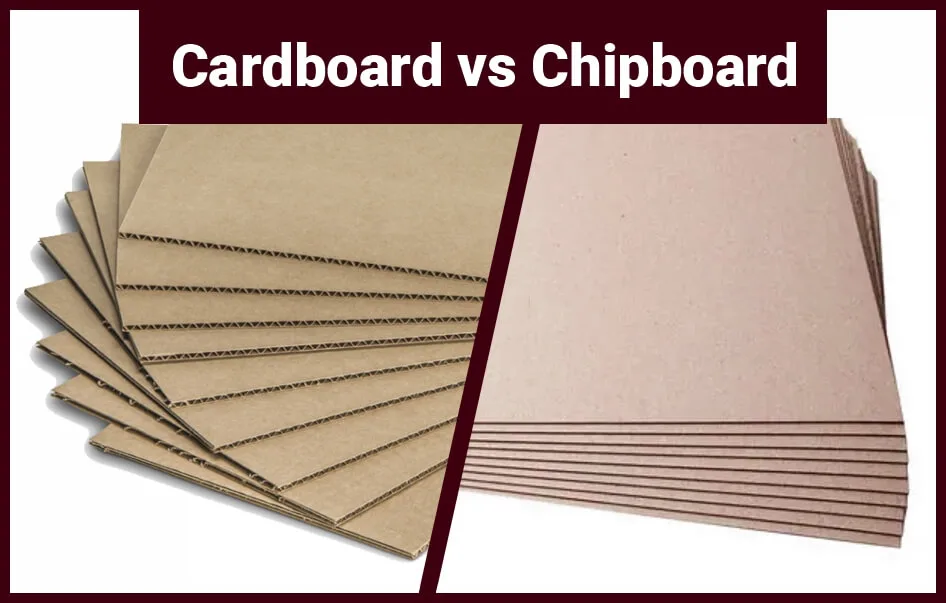
Ποια είναι τα καλύτερα υλικά για αρχιτεκτονικά μοντέλα?
Τα καλύτερα υλικά για αρχιτεκτονικά μοντέλα εξαρτώνται από το σκοπός του μοντέλου και το στάδιο της διαδικασίας σχεδιασμού. Για εννοιολογικά μοντέλα, υλικά όπως σανίδα αφρού, χαρτόνι, και χαρτί είναι τέλεια γιατί είναι αποδοτικός, εύκολο στη χειραγώγηση, και γρήγορα στη δουλειά. Καθώς προχωράτε σε περισσότερα λεπτομερή μοντέλα ή μοντέλα παρουσίασης, θα θέλετε να κάνετε αναβάθμιση σε υλικά όπως ακρυλικό, ξύλο, και ρητίνη, που προσφέρουν περισσότερα διύλιση, αντοχή, και ακρίβεια. Αν το μοντέλο σας αφορά ρεαλισμός και μοντέρνα φινιρίσματα, μέταλλο και ποτήρι πρέπει οπωσδήποτε να είναι στη λίστα σας.
Για έργα με οικολογική συνείδηση, βιοαποικοδομήσιμα υλικά, ανακυκλωμένα πλαστικά, και αφροί φυτικής προέλευσης γίνονται όλο και πιο δημοφιλή. Αυτά τα υλικά όχι μόνο μειώνουν τις περιβαλλοντικές επιπτώσεις αλλά προσθέτουν επίσης α μοναδική πινελιά στα μοντέλα σας, δείχνοντας τη δέσμευσή σας στη βιωσιμότητα.
Πώς επιλέγω υλικά για αρχιτεκτονικά μοντέλα?
Η επιλογή του κατάλληλου υλικού για το αρχιτεκτονικό σας μοντέλο είναι σαν να επιλέγετε το σωστό εργαλείο για τη δουλειά—κάθε υλικό έχει τον σκοπό του, και το να ξέρεις τι χρειάζεσαι είναι η μισή μάχη. Εδώ είναι τα βασικοί συντελεστές να εξετάσει:
- Στάδιο Έργου: Εάν βρίσκεστε στο πρώιμη εννοιολογική φάση, πάω να φέρω εύκαμπτος, φθηνά υλικά σαν χαρτόνι και αφρός. Όταν ωριμάσει το σχέδιο, υψηλής λεπτομέρειας υλικά όπως ακρυλικό και ξύλο θα είναι πιο κατάλληλο.
- Προϋπολογισμός: Το κόστος των υλικών ποικίλλει πολύ, σκεφτείτε λοιπόν το δικό σας δημοσιονομικούς περιορισμούς. Δεν θέλετε να σπάσετε τα χρήματα σε ένα μοντέλο που είναι μόνο για εσωτερική δοκιμή.
- Χρονικοί περιορισμοί: Εάν είστε σε ένα σφιχτό πρόγραμμα, πηγαίνετε με υλικά που είναι γρήγορα και εύκολα στην εργασία, σαν σανίδα αφρού ή χαρτόνι. Για πιο σύνθετα μοντέλα, υλικά όπως ακρυλικό ή ξύλο απαιτούν περισσότερο χρόνο και προσπάθεια.
- Σχεδιαστική Πρόθεση: Σκεφτείτε τι πρέπει να μεταφέρει το μοντέλο σας. Αν θέλετε να επιδείξετε σύγχρονος ή κομψή αισθητική, ακρυλικό και μέταλλο είναι τα υλικά που προτιμάτε. Για αγροτικός ή φυσικός σχέδια, ξύλο και φελλός θα κάνει θαύματα.
Ποια υλικά χρησιμοποιούνται σε αρχιτεκτονικά μοντέλα για παρουσίαση?
Όταν χρειάζεστε ένα μοντέλο που εντυπωσιάζει πελάτες, ενδιαφερόμενοι, ή επενδυτές, η επιλογή υλικού γίνεται κρίσιμη. Απαίτηση μοντέλων παρουσίασης υψηλή ακρίβεια, καθαρά φινιρίσματα, και την ικανότητα ανάδειξης βασικά χαρακτηριστικά σχεδιασμού.
- Ακρυλικό: Ιδανικό για διαφανή στοιχεία όπως παράθυρα και προσόψεις, ακρυλικό προσφέρει α λείος, γυαλιστερό βλέμμα που δίνει στο μοντέλο σας μια μοντέρνα αίσθηση.
- Ξύλο: Ξύλι και ξύλο μπάλσα είναι ελαφριά αλλά ανθεκτικά, ιδανικό για δημιουργία περίπλοκες λεπτομέρειες όπως το καδράρισμα, πόρτες, και παράθυρα.
- Ρητίνη: Για προσθήκη λεπτομέρεια μικρής κλίμακας σαν ειδώλια, εξωραϊσμός, ή ακόμα και υδάτινα χαρακτηριστικά, ρητίνη επιτρέπει υψηλή ακρίβεια και προσαρμογή.
- Μέταλλο: Για μοντέλα που χρειάζονται επιπλέον δύναμη ή για να αντανακλούν περισσότερο βιομηχανική εμφάνιση, μέταλλα όπως αλουμίνιο ή ατσάλι είναι τέλεια για δομικά στοιχεία και φινιρίσματα υψηλής ποιότητας.
- Αφρώδες σκάφος: Για μεγάλα, βασικά μοντέλα πλαισίου ή μαζικές μελέτες, σανίδα αφρού είναι οικονομικά αποδοτικό και εύκολο στην εργασία.
Το υλικό που θα επιλέξετε θα πρέπει να ανεβάσει το σχέδιό σας, φτιάχνοντάς το συνεχίζω να αντιστέκομαι και μιλήστε πολύ σε όσους το βλέπουν.
Ποια υλικά φιλικά προς το περιβάλλον μπορούν να χρησιμοποιηθούν για αρχιτεκτονικά μοντέλα?
Η βιωσιμότητα δεν είναι πλέον απλώς μια τάση - είναι μια αναγκαιότητα. Ευτυχώς, υπάρχει ένα αυξανόμενο φάσμα από φιλικά προς το περιβάλλον υλικά που είναι ιδανικά για την κατασκευή αρχιτεκτονικών μοντέλων. Αυτά τα υλικά όχι μόνο μειώνουν το αποτύπωμα άνθρακα, αλλά μπορούν επίσης να προσφέρουν α μοναδικής αισθητικής στο σχέδιό σας.
- Βιοδιασπώμενα υλικά: Επιλογές όπως αφροί φυτικής προέλευσης και βιοδιασπώμενες ρητίνες παρέχουν βιώσιμες εναλλακτικές λύσεις στα παραδοσιακά πλαστικά, και εξακολουθούν να παραδίδουν το λεπτομέρεια και ακρίβεια απαιτείται για μοντέλα υψηλής ποιότητας.
- Ανακυκλωμένα Πλαστικά: Με τη χρήση ανακυκλωμένα πλαστικά, δίνεις στα παλιά υλικά μια δεύτερη ζωή, διατηρώντας παράλληλα το αντοχή και δύναμη απαιτούνται για δομικά στοιχεία στα μοντέλα σας.
- Ανακυκλωμένο Χαρτί/Χαρτόνι: Αυτά τα υλικά είναι ευρέως διαθέσιμα, αποδοτικός, και ιδανικό για εννοιολογικά ή μικρής κλίμακας μοντέλα. Με την επιλογή ανακυκλωμένο χαρτί ή χαρτόνι, μπορείτε να παραμείνετε πιστοί στις βιώσιμες αρχές χωρίς συμβιβασμούς ποιότητα μοντέλου.
- Ανακυκλωμένο ξύλο: Για εκείνους που θέλουν να προσθέσουν μια φυσική πινελιά, ενώ παραμένουν οικολογικοί, ανακυκλωμένο ξύλο είναι μια εξαιρετική επιλογή. Παρέχει το ίδιο ζεστασιά και υφή σαν καινούργιο ξύλο, αλλά χωρίς τις περιβαλλοντικές επιπτώσεις της κοπής δέντρων.
Η επιλογή αυτών των φιλικών προς το περιβάλλον υλικών θα σας βοηθήσει στόχους βιωσιμότητας στο επίκεντρο ενώ εξακολουθεί να παράγει λεπτομερής, μοντέλα υψηλής ποιότητας.


